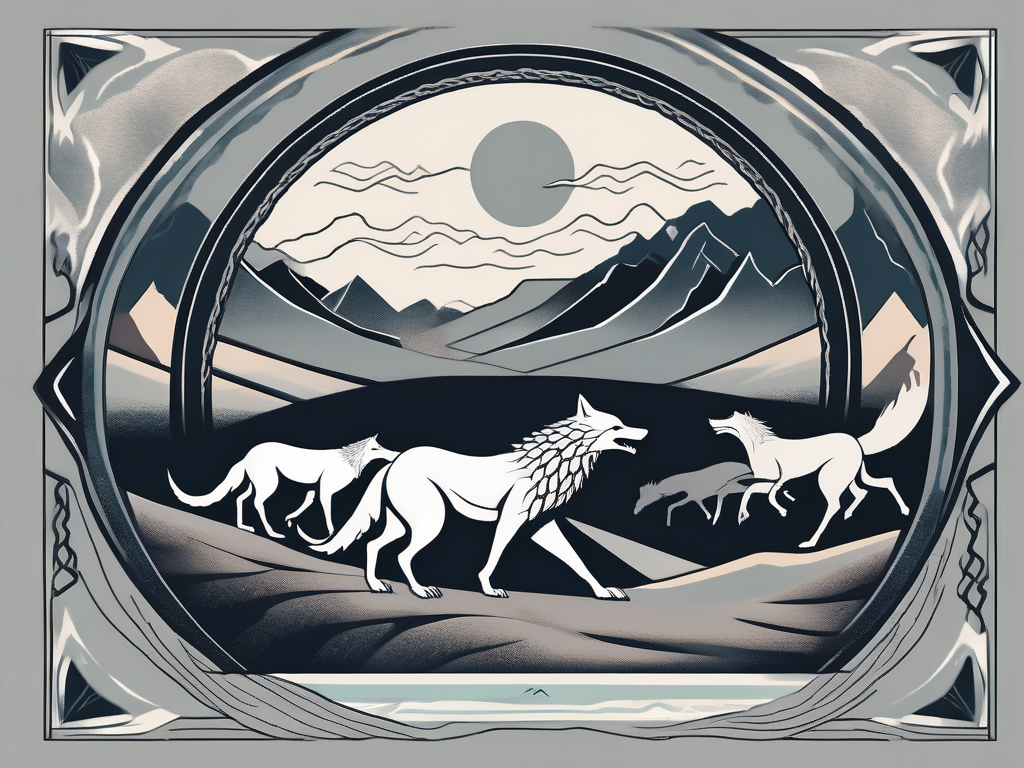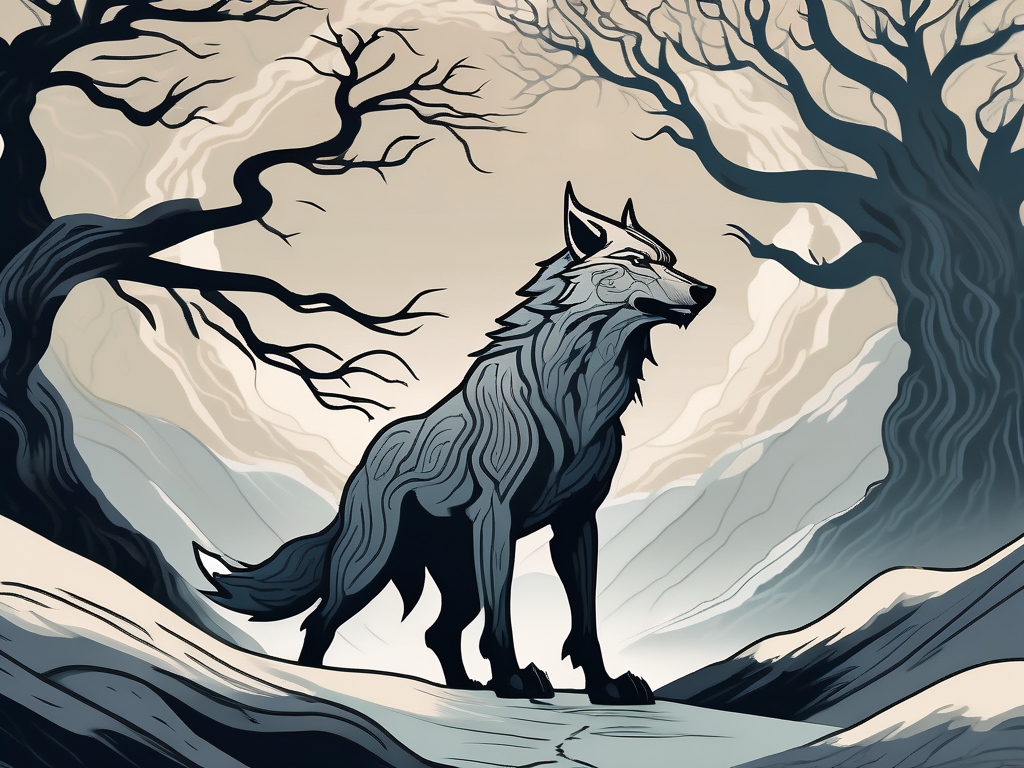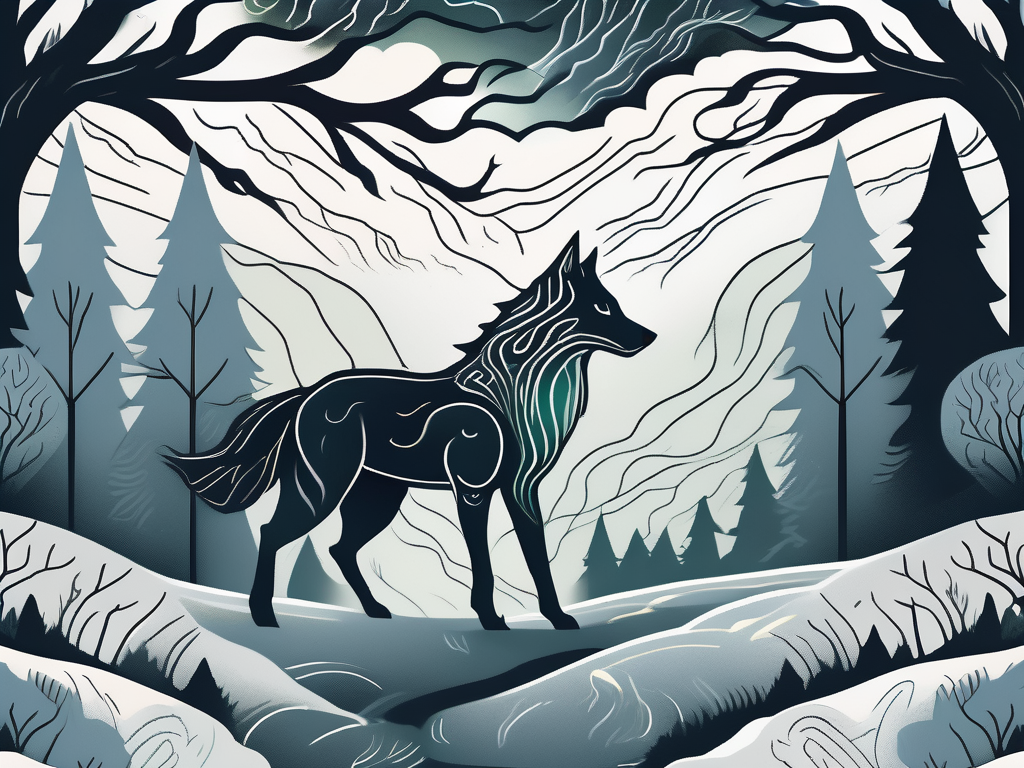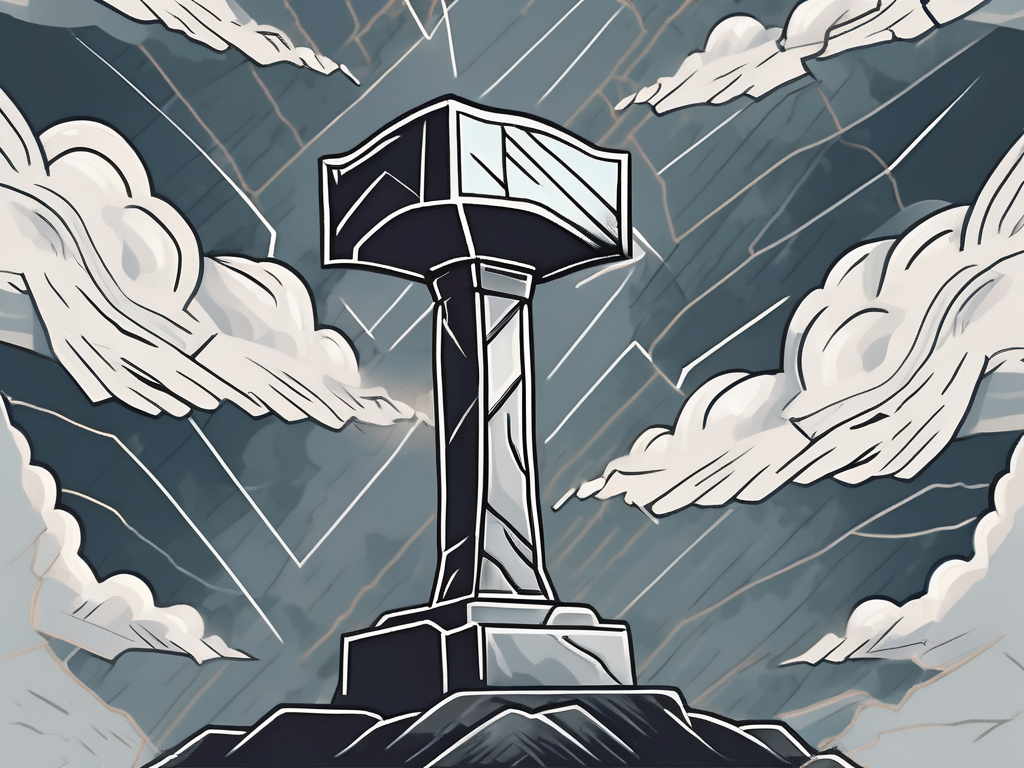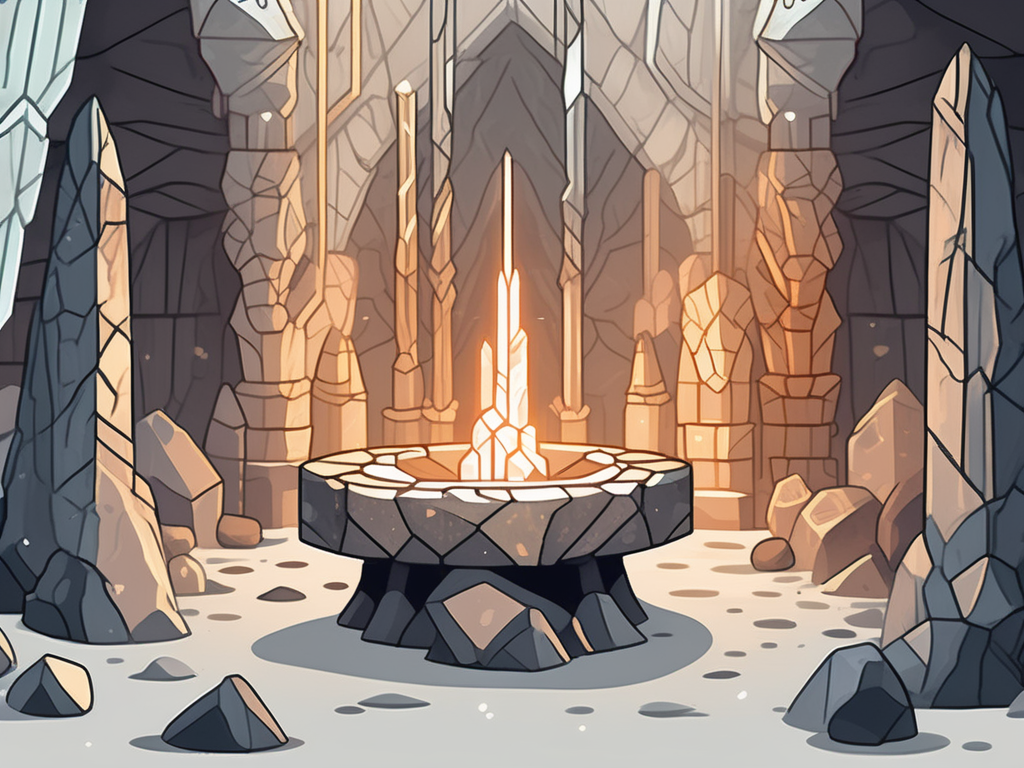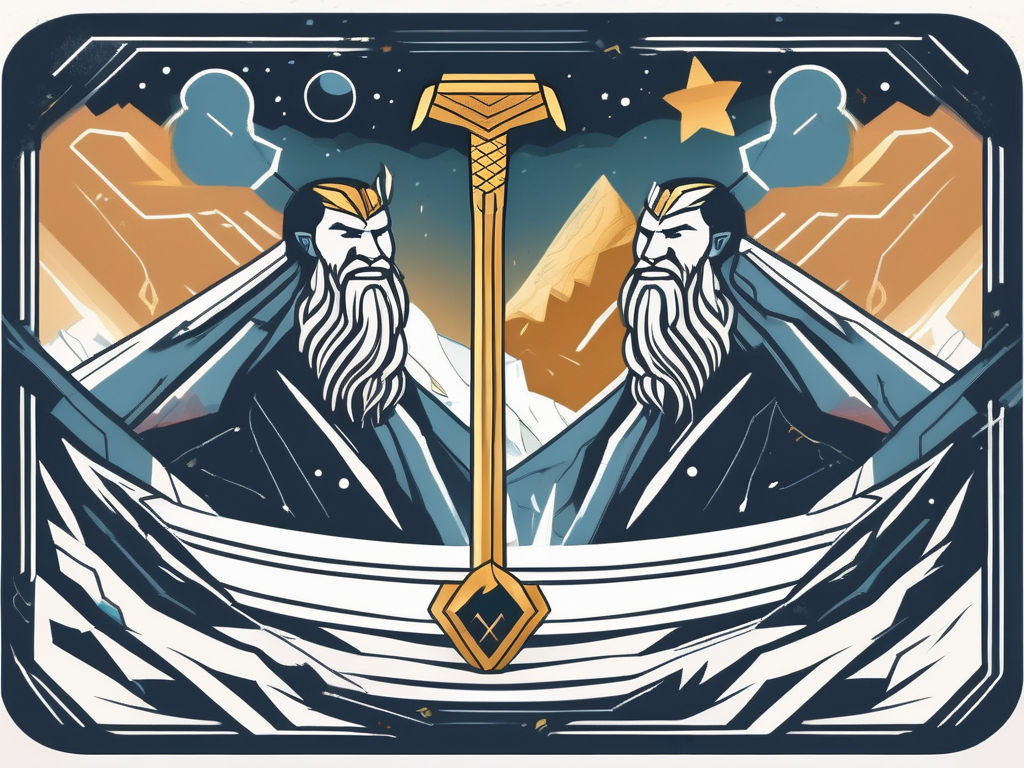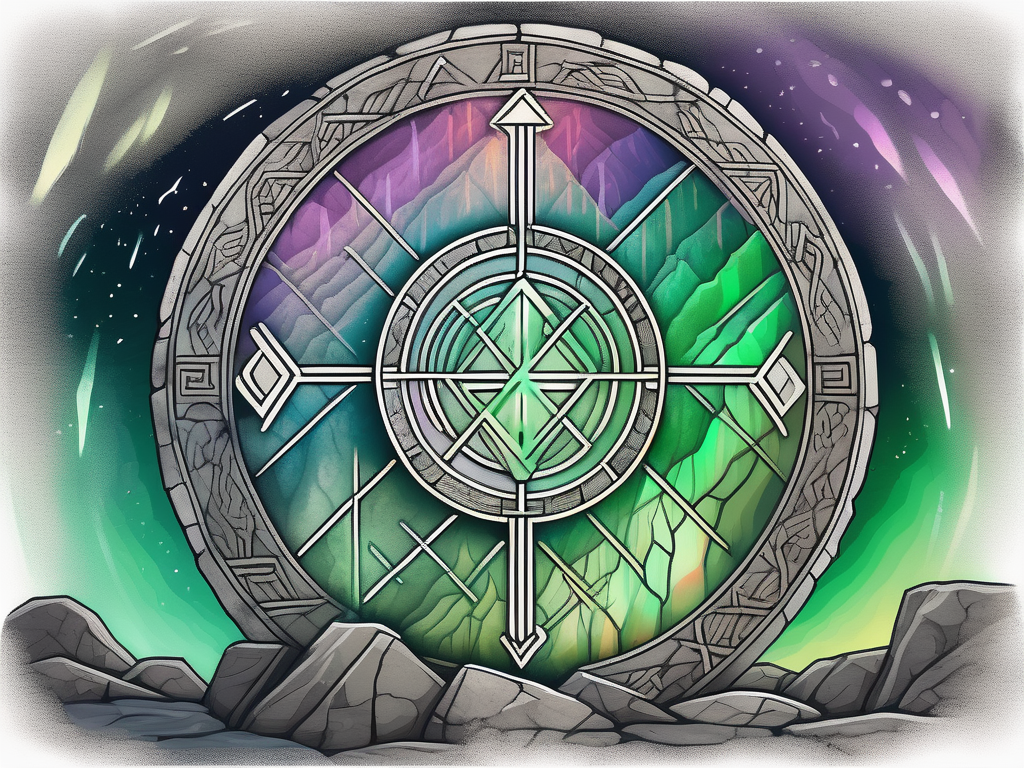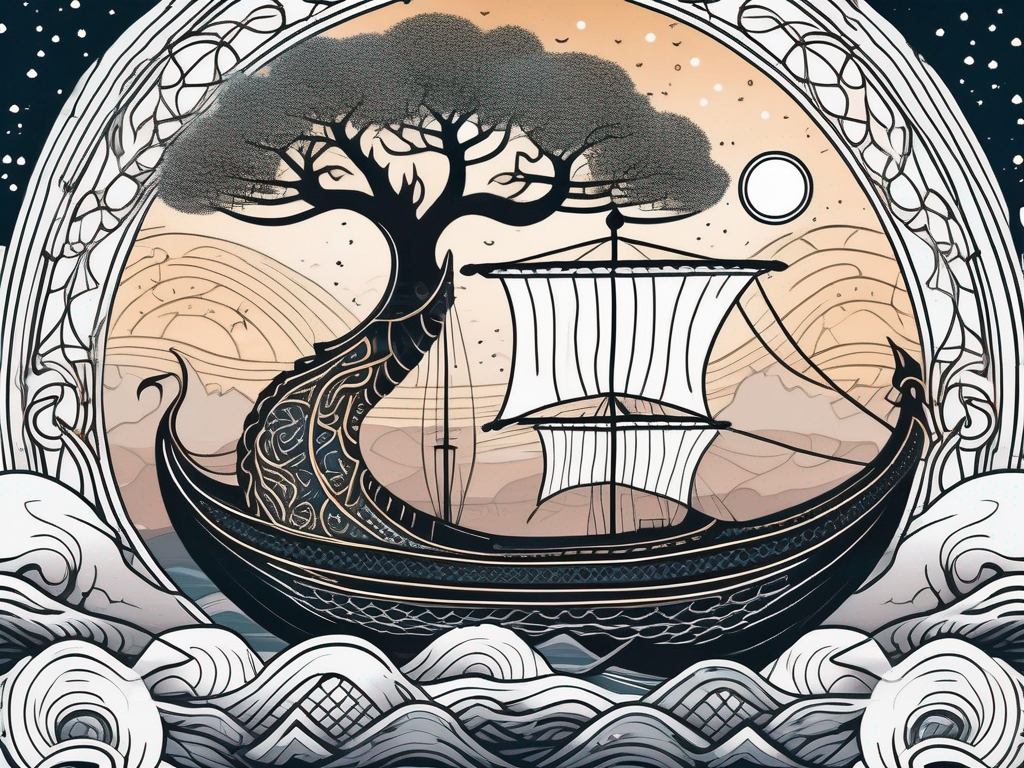Norse mythology is a rich and captivating tapestry of gods, heroes, and, of course, mythical beasts. These creatures, with their awe-inspiring powers and eerie characteristics, add an extra layer of intrigue to the already captivating tales. In this article, we will take a deep dive into the world of Norse mythology and explore the many fascinating beasts that inhabit it. From their origins and significance to their portrayal in sagas and their influence on modern culture, let’s embark on a journey to discover the wonders of Norse mythological beasts.
Understanding Norse Mythology
Before we delve into the realm of Norse mythological beasts, it is essential to gain a basic understanding of Norse mythology itself. This ancient belief system originated from the Norse people, who populated the regions of modern-day Scandinavia. As with any mythological tradition, Norse mythology features a pantheon of gods, mythical creatures, and epic sagas that tell stories of heroism, tragedy, and divine intervention.
The Norse people, known for their seafaring skills and warrior culture, developed a rich and complex mythology that reflected their worldview and values. Their mythology was not only a means to explain natural phenomena and the mysteries of the universe but also a way to understand the human condition and the complexities of life.
At the heart of Norse mythology are the gods, who play a central role in the stories and legends. The most well-known among them is Odin, the Allfather and ruler of Asgard, the realm of the gods. Odin is associated with wisdom, knowledge, and magic. He is often depicted with his two ravens, Huginn and Muninn, who serve as his eyes and ears in the world.
The Origins of Norse Mythology
Like many mythologies, the origins of Norse mythology are steeped in the mists of time. Passed down through generations orally, these tales were eventually recorded in texts such as Prose Edda and Poetic Edda during the Viking Age. These ancient texts provide invaluable insights into the beliefs and narratives that shaped Norse mythology and, consequently, the fascinating beasts that call it home.
The Viking Age, which spanned from the late 8th century to the 11th century, was a time of exploration, conquest, and cultural exchange. As the Norse people traveled across the seas, they encountered different cultures and mythologies, which influenced their own beliefs and stories. This cultural exchange enriched Norse mythology, adding new layers of complexity and diversity to its already vibrant tapestry.
The Importance of Beasts in Norse Mythology
In Norse mythology, beasts hold a significant role. These mythical creatures often represent powerful cosmic forces or embody the characteristics and qualities associated with certain gods and heroes. Their presence in the stories serves to add depth and symbolism, making them integral to the overall narrative.
One such beast is Jormungandr, the Midgard Serpent. This colossal sea serpent, said to be the child of Loki and the giantess Angrboda, encircles the world, biting its own tail. Jormungandr symbolizes the chaotic forces of nature and the constant struggle between order and chaos. Its presence in Norse mythology highlights the precarious balance between the realms and the ever-present threat of destruction.
Another notable creature is Fenrir, a monstrous wolf and the son of Loki. Fenrir is destined to play a significant role in the events leading up to Ragnarok, the apocalyptic battle that will bring about the end of the world. This ferocious wolf embodies the untamed forces of nature and the inevitability of fate, serving as a reminder of the impermanence of all things.
These are just a few examples of the many beasts that populate Norse mythology. Each creature has its own story and symbolism, contributing to the rich tapestry of Norse mythology and offering insights into the worldview and beliefs of the Norse people.
The Mighty Creatures of the Norse Cosmos
Within the expansive cosmos of Norse mythology, several awe-inspiring and enigmatic creatures capture our imagination. Let’s take a closer look at some of these mighty beings.
The Serpent Jörmungandr
Jörmungandr, also known as the World Serpent, is a colossal sea serpent that encircles the entire world. With its immense size and ferocious demeanor, Jörmungandr is a force to be reckoned with. According to the myths, it is destined to bring about Ragnarök, the cataclysmic battle that marks the end of the world.
Legend has it that Jörmungandr was born from the union of the trickster god Loki and the giantess Angrboða. As the serpent grew, it became so large that it could encircle the entire world and grasp its own tail. Its venomous breath is said to poison the seas, and its mere presence creates massive tidal waves and violent storms.
Despite its fearsome reputation, Jörmungandr has an intricate relationship with the god Thor. In one account, Thor attempts to catch the serpent while disguised as a giant, but his efforts are in vain. During Ragnarök, Thor and Jörmungandr are destined to face each other in an epic battle, resulting in the death of both.
The Wolf Fenrir
Fenrir, a gigantic wolf and the son of the trickster god Loki, is another formidable creature in Norse mythology. Feared for his immense strength and insatiable hunger, Fenrir plays a significant role in the events leading up to Ragnarök, where he will ultimately come face to face with the gods.
According to the legends, the gods grew wary of Fenrir’s growing power and decided to bind him. They presented Fenrir with a seemingly unbreakable chain called Gleipnir and challenged him to break free. Despite his initial reluctance, Fenrir agreed to be bound, believing that he could easily break the chain. However, to his surprise, Gleipnir proved to be stronger than any force he could muster, and he remained bound until Ragnarök.
Fenrir’s role in Ragnarök is pivotal. It is prophesied that during this cataclysmic event, he will break free from his chains and wreak havoc upon the world. He will devour the god Odin, but in turn, will be slain by Odin’s son, Víðarr, avenging his father’s death.
The Eight-Legged Horse Sleipnir
Sleipnir, the trusty steed of the wise and powerful god Odin, is a truly extraordinary creature. This horse possesses not four, but eight legs, allowing it to traverse great distances with unparalleled speed. Strong, swift, and loyal, Sleipnir is often associated with Odin’s exploits and acts as a symbol of his wisdom and mastery.
According to the myth, Sleipnir was born from the union of the god Loki, who had transformed himself into a mare, and the stallion Svaðilfari. As a result of this unconventional union, Sleipnir inherited incredible speed and strength, making it the perfect companion for Odin in his travels across the cosmos.
Sleipnir’s eight legs grant it the ability to traverse various realms effortlessly, including the land of the gods, Asgard, and the realm of the dead, Helheim. It is said that the horse’s hooves create thunderous sounds as it gallops through the sky, causing storms to form in its wake.
As Odin’s trusted companion, Sleipnir has played a crucial role in many of his adventures. It has carried Odin to countless battles, aided him in his pursuit of knowledge, and even served as a messenger between the gods and humans.
The Role of Beasts in Norse Sagas and Eddas
Beasts in Norse mythology are not only marvelous creatures but often serve as symbols, metaphors, and even central characters in the captivating sagas and eddas. Let’s dive deeper into their various roles within these ancient narratives.
Beasts as Symbols and Metaphors
Within Norse sagas and eddas, beasts are often employed as powerful symbols and metaphors. They represent elemental forces, embody virtues and vices, and serve as physical manifestations of the gods’ power. These symbolic beasts heighten the narrative’s intensity and add layers of meaning that resonate with readers even today.
Beasts as Protagonists and Antagonists
It’s not uncommon to find mythical beasts taking center stage in Norse sagas and eddas. These creatures, whether as protagonists or antagonists, drive the plot forward and challenge the gods and heroes. Their actions and interactions with the other characters set the stage for epic battles, heroic quests, and the triumph of good over evil.
The Influence of Norse Mythological Beasts in Modern Culture
As ancient as Norse mythology may be, its impact continues to reverberate throughout modern culture. Let’s explore how the awe-inspiring beasts of Norse mythology have made their mark in literature, film, video games, and even the world of comics.
Norse Beasts in Literature and Film
From Tolkien’s Middle-earth to contemporary fantasy novels and blockbuster movies, Norse mythological beasts have found a firm foothold in popular culture. Whether it be dragons, trolls, or giants, these creatures often draw inspiration from the rich and diverse bestiary of Norse mythology, enchanting audiences and capturing their imagination.
Norse Beasts in Video Games and Comics
The world of video games and comics is not immune to the allure of Norse mythological beasts either. Many games and graphic novels feature these creatures as formidable adversaries, allies, or even playable characters. As gamers and comic book enthusiasts embark on epic quests, they encounter and engage with these captivating beings, breathing life into Norse mythology once again.
The Mystery and Allure of Norse Mythological Beasts
Despite the passage of centuries, the fascination with Norse mythological beasts remains strong. Their mystery, symbolism, and larger-than-life presence continue to captivate and inspire us. There is an undeniable allure in delving into the realms of mythology, where extraordinary creatures roam and tales of gods and heroes unfold.
The Enduring Fascination with Norse Mythology
Norse mythology, with its captivating beasts, has endured the test of time. The deep-rooted fascination with this ancient belief system persists, as modern audiences are drawn to the epic tales, the larger-than-life characters, and the intricate web of mythology that weaves together gods, heroes, and mythical creatures.
The Unresolved Mysteries of Norse Mythological Beasts
Even with all that we know about Norse mythology, there are still many unanswered questions and enigmatic aspects surrounding these illustrious creatures. The allure of the unknown and the desire to uncover hidden truths keep us engaged, leaving room for ongoing exploration and new discoveries.
As we conclude our journey through the enthralling world of Norse mythological beasts, we reflect on the immense impact they have had on our culture, imagination, and storytelling traditions. From their origins in ancient texts to their representation in various forms of media, Norse mythological beasts continue to captivate and enchant, their legendary presence echoing through the ages.
